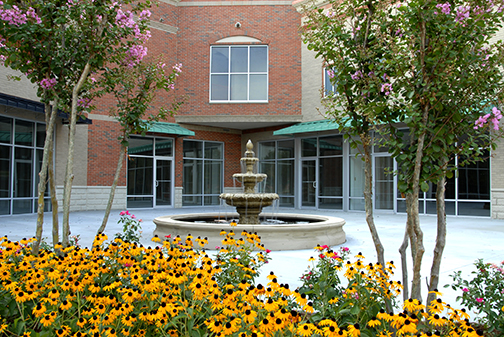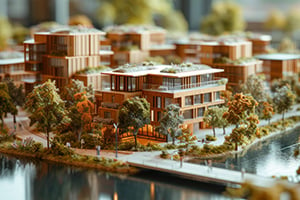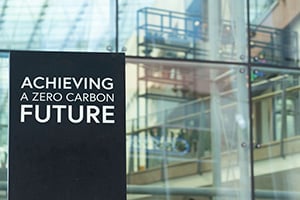 Saving water is a serious concern for any commercial building owner. One of our previous posts discussed some of the ways indoor water savers can help you conserve water while saving money and resources. Now we want to discuss outdoor water savers that can help you conserve water and earn LEED points.
Saving water is a serious concern for any commercial building owner. One of our previous posts discussed some of the ways indoor water savers can help you conserve water while saving money and resources. Now we want to discuss outdoor water savers that can help you conserve water and earn LEED points.
Keep in mind that most of our water saving suggestions for your commercial building can be translated to your residential home or apartment building property. If you’re interested in LEED certification, you’ve already made the commitment to carefully and wisely use resources. How we use water affects the community, state, and nation.
Let’s start with a look at how we can get more from water resources outside, including cooling tower water, the impact of xeriscaping, drip irrigation, and cisterns.
Cooling Tower Water Savers
In addition to evaluating fixtures in use in your commercial office building, it’s important to assess the cooling tower there. You might be surprised to know that your cooling tower may be wasting more water than the total water used by all your bathroom fixtures combined.
- Most large office buildings (greater than 1,000 square meters or more than 10,000 square feet) use a cooling tower as part of the HVAC cooling and heating system.
- Your building’s cooling tower can draw from 15 percent up to 50 percent of the building’s water use, depending on your local climate and its location. Cooling tower maintenance is important to reducing water waste.
- Treating and using cooling tower water can be especially beneficial to your water saver program. Blackmore Enterprises treats cooling tower water to allow its reuse over 8 – 10 cycles.
Outside: Water Savers and Xeriscaping
Don’t forget the costs of landscaping. EPA says that water used in landscaping averages more than 20 percent for commercial office buildings and approaches 30 percent for educational facilities and schools.
If you’re serious about water conservation, review current landscaping practices. If you’re not already on board with this idea, consider current or potential municipal impact fees and annual utility bills. Xeriscaping reduces landscaping costs and reduces the pressure your building places on local treatment plants.
To manage water used in landscaping for the long haul, you may need to add or revise irrigation and/or maintenance in use now for your native plants to flourish.
Xeriscaping isn’t gardening and shouldn’t be evaluated as such. Successful xeriscaping won’t rely as much on the beauty of the plants you select as the ability of these species to develop a thriving vegetative community. Naturally, selecting the right vegetation conserves water and energy and supports essential stormwater management. According to the EPA:
- Select plants that are water-conserving and consider annual precipitation in your area to benchmark and choose plants. You aren’t limited to cacti and succulents, but the idea is to choose hardy, self-sustaining vegetation.
- The EPA “WaterSense at Work” publication recommends using “appropriately graded sides” and “gentle slopes” to benefit plants and soil health.
If you’re wondering where to start, consider your lawns first. Traditional turf grass varieties require more maintenance to look lush and green. Consider seeding with native grasses to reduce the amount of attention—and water—your grounds need.
Outside: Drip Irrigation
After you’ve considered drought-tolerant vegetation and xeriscaping, consider how you deliver water to your grounds. Drip irrigation is simply better than sprinklers where saving time and money are concerned. It’s also better if you’re looking for greater water efficiency for your commercial or industrial property.
Some parts of the country, such as California, commercial building owners must legally comply with specific restrictions placed on water use. However, if you’re committed to taking a leadership view and assuming a role model position as an environmental steward, it’s important to save water regardless of your property location.
Replacing traditional water (spray or jet type) sprinklers to drip irrigation is one of the best ways to hydrate the commercial law or garden:
- A conventional sprinkler or spray irrigation system works by distributing and delivering water via sprinkler devices like fixed/moving rotors or mister head sprinklers.
- Most traditional sprinklers and irrigators aren’t targeted—everything around your building, including the street or sidewalk, is included. The process of watering the landscape can result in unintended water runoff and waste.
In comparison, a drip irrigation system improves efficiency. Plant roots are slowly, directly hydrated because the delivery hose has thousands of tiny holes. Less water loss occurs because there’s no chance of watering the road, walkway, or path. Water evaporation is less likely because water is delivered to plant roots.
If you’re considering drip irrigation for a larger area, jet sprays can be used to control higher volumes of water. Jet sprays tightly control the spray pattern and are great water savers. According to EPA, converting from traditional water sprinklers to micro or jet spray delivery (and using smart controllers to monitor and adjust irrigation timing, frequency, and amount) can reduce water use at least 30 percent and as much as 60 percent!
Outside: Cisterns
Cisterns are another way that commercial building can implement and manage stormwater best practices. Harvesting rainwater with cisterns is another way to reduce water costs by collecting/keeping water and reducing potential site runoff.
Cisterns aren’t a one-size-fits-all solution, so it’s important to consider the size and/or shape needed for your commercial property. All cisterns should meet state plumbing code requirements to ensure that the cistern is achieving important water quality improvement:
- The cistern must include a calming inlet to reduce water turbulence and protect solid matter that settles at the cistern base.
- The cistern should also have a floating outlet. In other words, the cistern intake hose must be flexibly attached to an inlet screen to prevent gross pollutants from circulating in the water. It should be suspended in the cistern to ensure that only the cleanest water is extracted.
Cisterns should also include an important overflow path (along with necessary vents, screens, and/or water traps) to protect collected water and prevent animals or insects from accessing it.
Many urban properties use one or more cisterns to collect rainwater. In Atlanta, SIG’s headquarter building at Premier Plaza has a cistern positioned beneath the parking deck. Even in drought conditions, our team enjoys beautiful green.
Ask SIG about Water Savers and LEED Certification
Outdoor water savers can obviously save you lots of money. After a water use audit, it’s possible to identify the ways you’re losing energy and money on water.
Sustainable Investment Group (SIG) is a LEED Proven Provider®. We offer LEED consulting, engineering, and training services to clients throughout the U.S. We can also help you with utility benchmarking and more. Contact Michael Cichetti at 404-343-3835 to learn how much SIG can do for you.
© 2016 Sustainable Investment Group (SIG). All Rights Reserved.



